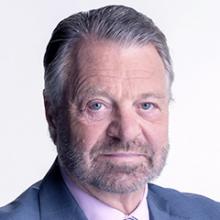You are here
Latin America's new pink tide?
Apr 09,2022 - Last updated at Apr 09,2022
MEXICO CITY — If former Brazilian president Luiz Inácio Lula da Silva reclaims the post in this October’s election (as now seems likely), and if Colombia’s leftist presidential candidate, Gustavo Petro, wins in May, their victories would build on a wave that began with Mexican President Andrés Manuel López Obrador’s victory in 2018. After AMLO came victories by Argentinian President Alberto Fernández in 2019, Bolivian President Luis Arce in 2020, and Peruvian President Pedro Castillo and Chilean President Gabriel Boric in 2021.
Many observers see a repeat of the “pink tide” that followed Hugo Chávez’s rise to power in Venezuela in 1999. Successive leftist victories then went to Chilean President Ricardo Lagos in 2000, Lula in 2002, Bolivian President Evo Morales in 2005, and Ecuadorian President Rafael Correa in 2006, among others.
To some, the current trend reflects necessary change in countries where inequality has become unbearable in the wake of the pandemic. But to others, the left-ward shift should be seen as a significant threat to the region and to the United States, considering the extremism of some of the new leaders and the inroads that Russia and China have been making in Latin America.
In fact, the situation is more complicated than either of these views suggests. After the first pink tide, I noted that there were two Latin American lefts: One was modern, democratic, cosmopolitan, pro-market and social democratic; the other was nationalistic, authoritarian, statist, populist, and anachronistic. Now, there are clearly three “lefts”, each with little in common with the others.
To be sure, all the leaders of the current wave identify as progressives, and the success of many is a response to poor management of the COVID-19 pandemic. Their programmes all place a strong emphasis on populist social policies, and most have a discernible anti-American outlook on foreign policy and issues such as mining rights and inward investment.
But there are significant differences. The first of the three lefts includes the trio of dictatorships: Cuba, Nicaragua and Venezuela. While these regimes seek to associate themselves with the rest of the Latin American left, and while other leftist regional leaders avoid criticising them, they are fully in a category of their own. Since 2018, all the new leaders have been, or will be, democratically elected in countries that enjoy basic freedoms, market economies, and cordial relations with Washington, DC. Cuba, Nicaragua, and Venezuela share none of these features.
The second category includes leaders, regimes, and parties that have, or have had, an unmistakable social-democratic inclination. A good example is Boric. Although his coalition has an uncompromising left wing that includes the Communist Party, the Mapuche indigenous movement, and several radical members of a Constituent Assembly, Boric seems to be following in the footsteps of predecessors like Lagos and Michelle Bachelet (who forged what former Chilean Minister of State Carlos Ominami called the “new Chilean way”).
The same would be true of Lula if he returns to office. During his first term (2003-07), Lula pursued orthodox economic policies, showed practically no authoritarian bent, and implemented social policies that were both effective and sensibly financed. Though he veered from this prudent approach during his second term and engaged in some rhetorical and foreign-policy excesses, the basic character of his administration remained typically social democratic.
Fernández also belongs to this group, though he is more of a mixed case. After inheriting a massive foreign debt and high inflation from the previous government, he has imposed price and exchange controls, indulged in strident rhetoric, and flirted with Russia and China.
Ultimately, Boric, Lula, and even Fernández are arguably closer to the centre than to the far left, because they emerged from multiround electoral systems in which victory requires reaching beyond one’s political base. The cases of AMLO, Petro, Castillo and Arce are different. AMLO makes a point of governing only for his base, and Petro has made clear that he would govern for the eco-activist left (which perhaps explains the recent decline in his approval ratings).
Similarly, Arce remains close and loyal to the populist Morales, his former boss and predecessor as Bolivian president. And while Castillo has spent more time warding off recurrent impeachment attempts than anything else, he shares much of the statist, nationalist and populist ideology espoused by the others in the third left.
AMLO has been an exponent of this approach with his constant attacks on Mexico’s independent institutions, from the electoral authority and the National Institute for Transparency to various civil-society organisations and the media. Little has come from this offensive; but as his administration winds down, the risks of a more sweeping crackdown may be growing. With energy policies that are not only environmentally regressive but also highly statist and nationalist, AMLO has been harking back to the era of powerful, corrupt and inefficient state oil and power monopolies. He is thus hard to differentiate from classically populist, anachronistic Latin American leaders of the past.
Beyond the obvious differences between these leftist leaders’ styles and platforms, the idea of a “new pink tide” goes only so far. While all Latin American economies have been battered by the 2020 recession, some countries are simply confronted with much tighter constraints than others are. Poverty and inequality have risen, tax revenues have declined, and the recovery is taking longer than expected.
In these circumstances, meeting voters’ demands will not be easy. Despite politicians’ best intentions and the enthusiasm of their supporters, electoral victories do not guarantee radical social change. Notwithstanding their fulminations against free trade, for example, Boric, Castillo, Petro and AMLO have shown no willingness to withdraw from their countries’ free-trade agreements with the US.
There is no new pink tide in Latin America. Rather, there is a diversity of governments and movements that often rely on similar rhetoric, but whose substantive differences are more significant than their similarities. In this respect, the region should consider itself lucky.
Jorge G. Castañeda, a former foreign minister of Mexico, is a professor at New York University. Copyright: Project Syndicate, 2022.













